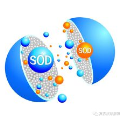RGB-D salient object detection (SOD) demonstrates its superiority on detecting in complex environments due to the additional depth information introduced in the data. Inevitably, an independent stream is introduced to extract features from depth images, leading to extra computation and parameters. This methodology sacrifices the model size to improve the detection accuracy which may impede the practical application of SOD problems. To tackle this dilemma, we propose a dynamic distillation method along with a lightweight structure, which significantly reduces the computational burden while maintaining validity. This method considers the factors of both teacher and student performance within the training stage and dynamically assigns the distillation weight instead of applying a fixed weight on the student model. We also investigate the issue of RGB-D early fusion strategy in distillation and propose a simple noise elimination method to mitigate the impact of distorted training data caused by low quality depth maps. Extensive experiments are conducted on five public datasets to demonstrate that our method can achieve competitive performance with a fast inference speed (136FPS) compared to 10 prior methods.
翻译:RGB-D显要天体探测(SOD)显示,由于数据中引入了更多的深度信息,在复杂的环境中,它优于探测;不可避免地引入了独立的流以从深度图像中提取特征,从而导致额外的计算和参数;这一方法牺牲了模型尺寸以提高探测精确度,从而可能妨碍SOD问题的实际应用;为解决这一难题,我们提出了一个动态蒸馏方法以及轻量结构,该结构大大减少了计算负担,同时保持了有效性;这一方法考虑了教师和学生在培训阶段的表现,并动态地分配了蒸馏重量,而不是对学生模型适用固定重量;我们还调查了RGB-D早期熔化战略的蒸馏问题,提出了简单的消除噪音方法,以减轻低质量深度地图造成的扭曲培训数据的影响;对五个公共数据集进行了广泛的实验,以证明我们的方法能够以快速推导速(136FPS)和10种以前的方法实现竞争性性表现。



